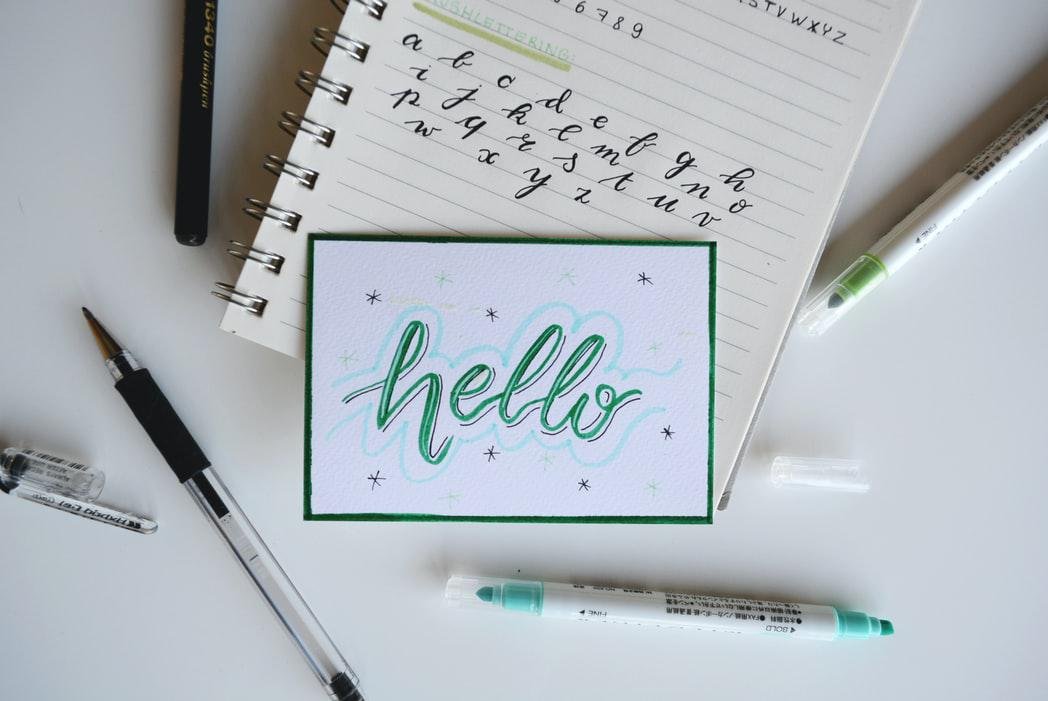
Every Windows-based system has a default font library that consists of a wide variety of fonts. However, newer and more innovative fonts are always being developed and these can really make a piece of writing or a photograph or anything visual for that matter, unique. Unfortunately, these new fonts won’t be added to your Windows system on their own. To integrate them into your font library, you have to download them.
In this post, we’re going to share with you some really handy tips that will tell you all about how to use downloaded fonts and what you need to do to use the best fonts across all your text and graphics editing work. So, let’s get going!
Tip #1: Downloading the fonts
Before we get to how you can use the fonts that you’ve downloaded, we’ll tell you how to get the best new fonts. While you can conduct a Google search that would lead you to several free font websites, we’ve compiled a list of some of the best free sites to download a vast array of fonts that includes retro, vintage, serif, sans serif, brush, handwriting, and graffiti fonts.
The websites that you must visit for these fonts and more include FontSpace, Creative Market, Behance, Fontstruct, and AbstractFonts. Across all these websites, you’ll find hundreds and thousands of unique fonts waiting patiently for you to hit that download button.
Tip #2: Installing the fonts correctly
While the websites mentioned above are all quality websites for downloading free fonts, not all of the font files available for download there are in working condition. Occasionally, you may end up downloading a corrupt font file that you won’t be able to install, so it’s important to check whether or not the font files you’ve downloaded are corrupt or not.
To do this, right-click on a font file after you’ve downloaded it and select the ‘Preview’ option. If the preview works, the file is not corrupt, which means you can install it. Microsoft has made it easier than ever before to install new fonts as the preview window has the ‘Install’ option, so you can directly install the fonts into your system after you’ve previewed them.
Tip #3: Restarting programs
It’s recommended to close all programs (if open) across which you plan to use your new fonts and then install the downloaded fonts. However, even if you don’t close them, you can restart them once you’re done installing the new fonts.
Restarting them is necessary as the programs can’t detect the installation of new fonts if the installation is carried out while they’re open. So if you’ve just installed a new font but can’t see it in the font library in Word, all you’ll need to do is close the program and restart it.
Tip #4: Choosing fonts for a project
Once the new fonts are downloaded and installed, it’s time to learn how to use downloaded fonts effectively across all your editing projects. To better understand the nature of fonts, we’ll need to know about readability and legibility, the two most essential characteristics of fonts.
- Readability: Fonts are based on communication and style, and the readability of a font aims to address its communicative abilities. A font is considered readable when it does not, in any way, hinder a person’s ability to read a particular message. While there are innumerable fonts you can download, particularly of the abstract kind, that don’t qualify as readable, there are many that are ranked highly in terms of their readability.
Some of the fonts that are noted for being very readable include Merriweather, Montserrat, Pluto Sans, Droid Sans, and Minion. If you’re working on a project that has a lot of content, you need to choose readable fonts over the ones that are not. While you can use fonts that are not as readable as the ones mentioned previously for headlines and titles, using them in the main content is not recommended, as genuine readers value readability more than style.
Hard-to-read fonts such as Monotype Corsiva, Haettenschweiler, and Comic Sans Italicized can work wonders when used for writing titles, as titles and headlines tend to be short. So even if fonts with low readability are used to create them, it’s not a matter of concern, as one doesn’t have to go through a large body of content to understand their meanings.
- Legibility: Readability and legibility are often used interchangeably when people talk about fonts, but they are actually different from one another. While readability has to do with how easy or difficult it is to read a certain piece of text, legibility deals with the letterforms being used. In some respects, one could say that readability deals with the communication aspect, and legibility deals with the style aspect.
Letterforms can be classified as conventional and unconventional and conventional letterforms are those that consist of letters stylized in the way that we are ‘conventionally’ familiar with. Unconventional letterforms, on the other hand, consist of letters stylized in extremely abstract and unconventional ways. Due to their stylistic nature, unconventional letterforms take more time to be processed by the human brain.
Typically, when a lot of content is involved, it’s more appropriate to choose fonts with high legibility such as Futura, Bambino New, Averta, and Queulat Cnd as they feature conventional letterforms and can be read easily. However, fonts with low legibility, such as Tobin Tax, have their uses too, particularly when something decorative needs to be created.

Tip #5: Mix and match
How different fonts interact with each other, especially when they’re made to occupy the same space, is fascinating. According to the top graphic designers, the trick to using multiple fonts successfully within the same space is all about maintaining a fine balance through contrast.
Imagine there’s a title along with the main content body. Ideally, you should be choosing two fonts that are different from each other so that both the title and the main body of content get the attention they deserve. Using the same or similar fonts for both will make it look boring and dull and it will be hard for viewers and/or readers to distinguish between the title and the content body.
Ultimately, it’s up to you to take the trial-and-error route to find out what works for you in a particular project. A really handy tip that you can employ in almost any project and be successful in achieving a nice balance between different fonts is to add two different fonts within the same font family. It can work wonders because two fonts from the same font family have their similarities and their differences as well. You can also achieve balance by combining modern fonts with classic fonts.
A great example of two fonts from the same family is using Avenir Heavy and Avenir Light from the Avenir font superfamily. For modern and classic font combinations, you can experiment with Times New Roman and Futura. Also, feel free to play around with the emboldened and italicized versions of the respective fonts.
Tip #6: Sizing multiple fonts
Another common issue that haunts designers when using multiple fonts is how to size the fonts appropriately. Sizing the fonts can have an impact on making one particular font more prominent than the other, establishing hierarchy in the process.
You may be wondering whether or not it’s a good idea to make one font more prominent than another when you want both fonts and the content that they present to get people’s attention. Let us tell you that prominence for one font, in this context, is not necessarily bad news for the other font.
In such a situation, the prominence only ensures more distinction between both fonts, and the contrast in their sizes offers a great degree of visual appeal. For example, if you’re going for a modern and classic font combination like Futura and Times New Roman, with Futura as the title and Times New Roman as the main content body, you could try sizing the title at 30pt and keep the main content body at 12 pt.
Tip #7: Make as much use of additional elements as you can
Colors, outlines, shadows, borders; the list of additional elements that you can use to spice up your text content is almost endless. As you delve deeper into the world of typography and design, you should experiment with different additional elements and in time, you should start employing them to create a unique style.
Ultimately, the world’s best design professionals have been able to hit the heights of success simply because they spent a lot of time experimenting. So now that you have some idea as to how to use downloaded fonts, we hope you’re going to put this knowledge to use.
We’d also recommend you to work with fonts across different settings. For example, you could experiment with fonts simply in a text-based setting like MS Word, or you could play around with photographs and graphics on photo-editing software like Paint.net or Photoshop, or you could try your hand at incorporating different fonts and text elements on video editing software.